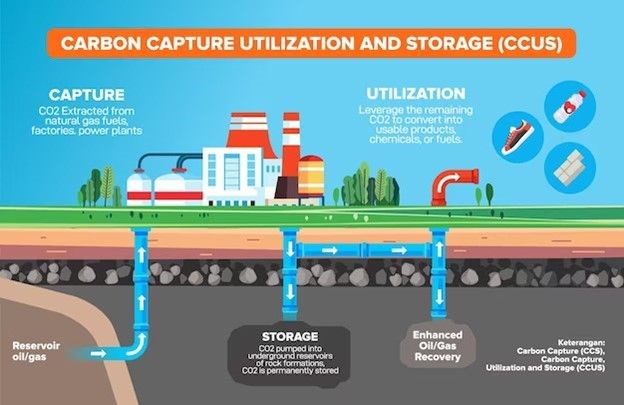Exploring Carbon Capture: Advancements and Environmental Benefits
38
Carbon Capture: A Crucial Technology for Mitigating Climate Change
There are several carbon capture projects around the world, each employing different technologies and strategies. Here are some notable examples:
Boundary Dam Carbon Capture Project (Canada):
Location: Saskatchewan, Canada
Overview:
- The Boundary Dam Carbon Capture Project is part of a coal-fired power station. It utilizes post-combustion carbon capture technology to capture CO2 emissions before they are released into the atmosphere. The captured CO2 is then transported and stored underground.
Sleipner Project (Norway):
Location: North Sea, Norway
Overview:
- The Sleipner Project is an offshore natural gas processing facility. It was one of the first commercial-scale carbon capture and storage projects globally. The project involves separating CO2 from natural gas and injecting it into a deep saline aquifer for geological storage.
Gorgon Project (Australia):
Location: Barrow Island, Australia
Overview:
- The Gorgon Project is a liquefied natural gas (LNG) facility that incorporates carbon capture and storage. It captures CO2 from the natural gas feed and stores it underground in a deep geological formation. The project aims to reduce emissions from the LNG production process.
Petra Nova Carbon Capture Project (USA):
Location: Texas, USA
Overview:
- Petra Nova is a post-combustion carbon capture project located at a coal-fired power plant. It captures CO2 from the flue gas before it is released into the atmosphere. The captured CO2 is then transported via pipeline for enhanced oil recovery (EOR) and storage.
Amur Gas Processing Plant (Russia):
Location: Amur region, Russia
Overview:
- The Amur Gas Processing Plant incorporates carbon capture technology to reduce the environmental impact of natural gas processing. It captures CO2 from the natural gas feed and stores it underground, contributing to emission reduction efforts.

Quest Carbon Capture and Storage Project (Canada):
Location: Alberta, Canada
Overview:
- The Quest project is part of an oil sands operation and focuses on capturing CO2 emissions from the upgrading process. The captured CO2 is then transported and stored underground. It is one of the largest carbon capture and storage projects in the world.

In Salah Gas Project (Algeria):
Location: In Salah, Algeria
Overview:
- The In Salah Gas Project is a joint venture involving the injection of captured CO2 into a deep saline aquifer. This project demonstrates carbon capture and storage in a natural gas processing facility.
These projects showcase diverse approaches to carbon capture, including post-combustion, pre-combustion, and storage in different geological formations. They represent a critical step toward reducing greenhouse gas emissions and mitigating climate change. Ongoing research and development in this field aim to improve the efficiency and cost-effectiveness of carbon capture technologies.
https://www.economist.com/science-and-technology/2021/09/18/the-worlds-biggest-carbon-removal-plant-switches-on?utm_medium=cpc.adword.pd&utm_source=google&ppccampaignID=18151738051&ppcadID=&utm_campaign=a.22brand_pmax&utm_content=conversion.direct-response.anonymous&gad_source=1&gclid=CjwKCAiA1-6sBhAoEiwArqlGPq5gClUy64suatvmbfVBgvmgClD5q6l_F4UL0eJ_WZgr2r0XAGBu8RoC3g4QAvD_BwE&gclsrc=aw.ds
Carbon capture and storage (CCS) not only helps mitigate climate change by capturing and storing carbon dioxide (CO2) emissions but also offers opportunities for the utilization of captured carbon in various products. Here are some examples of CCS utilization products:
Carbonated Beverages:
- CO2 captured from industrial processes can be purified and used in the production of carbonated beverages. This application provides a sustainable and recycled source of carbonation for soft drinks and sparkling water.
Greenhouses and Agriculture:
- Captured CO2 can be supplied to greenhouses to enhance plant growth. This process, known as carbon dioxide enrichment, is used to optimize photosynthesis and improve crop yields in a controlled environment.

Carbonated Concrete:
- Researchers are exploring ways to incorporate captured CO2 into concrete during the manufacturing process. This carbonated concrete not only reduces the carbon footprint of construction but also helps sequester CO2 permanently.
Plastics and Polymers:
- CO2 can be used as a feedstock for the production of plastics and polymers. By incorporating captured carbon into these materials, companies can reduce their dependence on fossil fuels and create more sustainable products.

Carbon Nanotubes:
- Researchers are investigating the use of captured CO2 to produce carbon nanotubes. These nanomaterials have various applications in electronics, materials science, and other industries.

Synthetic Fuels:
- Captured CO2 can be used in combination with hydrogen to produce synthetic fuels through a process called Power-to-X. These synthetic fuels can be used as a clean alternative to traditional fossil fuels in transportation and industry.
Mineralization:
- CO2 can be mineralized by reacting it with certain minerals, creating stable carbonates. This process not only sequesters carbon permanently but also produces valuable materials that can be used in construction.
Carbon Farming:
- In agriculture, captured CO2 can be injected into the soil to enhance soil carbon content, promoting healthier and more productive soils. This practice, known as carbon farming, contributes to both climate change mitigation and improved agricultural practices.

Carbon Capture Utilization and Storage (CCUS) in Industry:
- Some industrial processes use captured CO2 as an input for chemical reactions, leading to the production of various chemicals and materials. This approach is often referred to as carbon capture utilization and storage (CCUS).
Carbon Offset Credits:
- Companies that capture and store CO2 can sell carbon offset credits, allowing other organizations to compensate for their emissions by investing in projects that contribute to carbon reduction efforts.
These examples highlight the versatility of captured CO2, turning it from a potential environmental pollutant into a valuable resource for the development of sustainable products across different industries. The ongoing exploration of innovative applications for captured carbon continues to expand the possibilities for utilizing CCS technology.












































